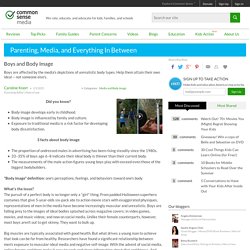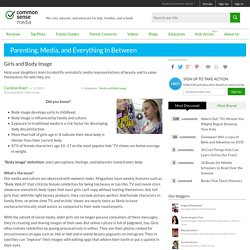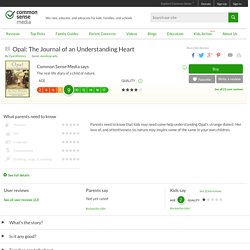

Susan Sontag on Beauty vs. Interestingness. By Maria Popova Defying consumerism and the banality of the beautiful, or why our capacity for astonishment endures.

“Attitudes toward beauty are entwined with our deepest conflicts surrounding flesh and spirit,” Harvard’s Nancy Etcoff wrote in her fantastic meditation on the psychology of beauty. Indeed, beauty is a complex beast surrounded by our equally complex attitudes, and who better to tease those complexities apart than the greatest public intellectual of the twentieth century? Months before her death, Susan Sontag — who had a lifetime of strong opinions on art and who coined the notion of “aesthetic consumerism” — wrote a spectacular essay titled “An Argument Against Beauty,” found in the 2007 posthumous anthology At the Same Time: Essays and Speeches (public library), the superb volume that gave us Sontag on courage and resistance and literature and freedom.
Sontag writes: The subtraction of beauty as a standard for art hardly signals a decline of the authority of beauty. Boys and Body Image. Did you know?

Body image develops early in childhood.Body image is influenced by family and culture.Exposure to traditional media is a risk factor for developing body dissatisfaction. 3 facts about body image The proportion of undressed males in advertising has been rising steadily since the 1980s.33–35% of boys age 6–8 indicate their ideal body is thinner than their current body.The measurements of the male action figures young boys play with exceed even those of the biggest bodybuilders. "Body image" definition: one's perceptions, feelings, and behaviors toward one's body What's the issue? Big muscles are typically associated with good health. Girls and Body Image. Did you know?

Body image develops early in childhood.Body image is influenced by family and culture.Exposure to traditional media is a risk factor for developing body dissatisfaction.More than half of girls age 6–8 indicate their ideal body is thinner than their current body.87% of female characters age 10–17 on the most popular kids' TV shows are below average in weight. "Body image" definition: one's perceptions, feelings, and behaviors toward one's body What's the issue?
Our media and culture are obsessed with women's looks. Magazines have weekly features such as "Body Watch" that criticize female celebrities for being too heavy or too thin. With the advent of social media, older girls are no longer passive consumers of these messages; they're creating and sharing images of their own. Why body image matters for girls The pressure to live up to such narrow beauty standards and always be "camera-ready" can affect both physical and mental health.
Time Flies (Age 4+) And Then It's Spring (Age 4+) Charlie and the Chocolate Factory (Age 6+) The Wonderful Wizard of Oz (Age 8+) Opal: The Journal of an Understanding Heart (Age 9+) The journal, written in Opal's strange dialect that included numerous French words and phrases (and which give rise to speculation that Opal was descended from French aristocracy), is lovely, and warrants the poetic treatment.

It's also not the work of a professional (most of it was done when Opal was 6), and Boulton's editing makes the whole tighter and more cohesive. Opal's tendency to see soul and intelligence and feeling in everything, living and inanimate, brings her world to magical, shimmering life, and hearkens back to animist and pagan religions. This is clearly not a book for every kid, or even for many.
There's no plot, little action, and a confusing abundance of characters, both human and animal. But for children who love nature, and language, the way Opal did it could be entrancing, and any reader will be inspired to look at their own world through Opal's eyes. Wonder (Age 11+) All About Vee (Age 12+) The Prophet (Age 15+) One Day on Earth. Chasing Ice. Dirtgirlworld (Age 4+) Beauty and the Beast (Age 5+) March of the Penguins (Age 6+) Nature (Age 7+)
Winged Migration (Age 7+) Babies (Age 7+) Mad Hot Ballroom (Age 8+) At first, it might seem strange to see such young people working so seriously on ballroom dancing.

But within minutes, Marilyn Agrelo's documentary convinces viewers that this is exactly the right activity for these dedicated, enchanting fifth-graders. As they work with their teachers and each other to learn the difficult steps and postures for the rumba, tango, swing, merengue, and fox-trot, they also reveal much about themselves as thoughtful, dynamic young people. As they dance, they are exposed to various cultural traditions and begin to learn traditional gender roles (the boys are instructed, "Take care of your partner"). More than anything else, the movie impresses by the respect it affords its subjects. Whether the dancers perform for the camera (which some of them certainly do), explain their interest (Michael Vaccaro says, "It's like a sport that hasn't been invented yet! ") Life Is Beautiful (Age 13+) The Tree of Life (Age 14+) Discover the Forest (Age 8) Google Art Project (Age 12+) National Geographic Kids (Age 8+)
Project Noah (Age 10+) Beautiful Now. Pinterest (Age 13+) Endless Ocean (Age 5+) Drift Away (Age 9+)